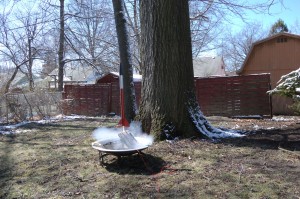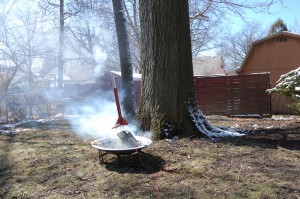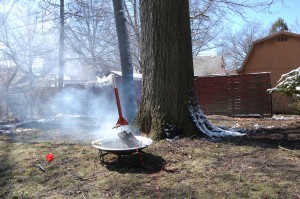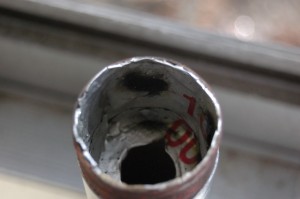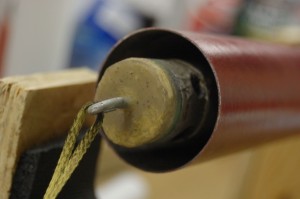Artemis Ground Tests successful!
(Cuyahoga Falls – Friday, March 26, 2010)
Static ground tests of the Artemis Booster were successful. After a one day delay due to a short blast of winter weather, we managed to perform the static ground tests of the Artemis booster under rocket power. The purpose of the tests was to test the ejection baffle system to ensure proper operation.
Two tests were performed under close full power using E-9 rocket motors. This would test the baffle system under close to the most strenuous motor that will be used in the booster. The ejection system performed flawlessly during both tests, clearing the Artemis for its first flight tests Saturday, March 27th.
A low-cost plastic parachute was used to ensure that no hot particles made their way into the (silver) parachute bay. If so, the parachute would instantly melt under the heat. The parachute survived in “good as new” condition after the test.
Another purpose of the test was to ensure our customized built-in baffle system would survive being bathed in hot gasses and molten particles of the black powder ejection charge. The system survived the ordeal. Tests conclude the system is good for two consecutive flights – after that, cleaning and replacement of the aluminum heat shield material is required before additional flights can be performed.
We are looking into high temperature epoxies to coat the outer baffle walls to eliminate this restriction on future flights. The inner baffle appears to be in really good condition.
Our next report will be after tomorrow’s (Saturday) maiden flight!
